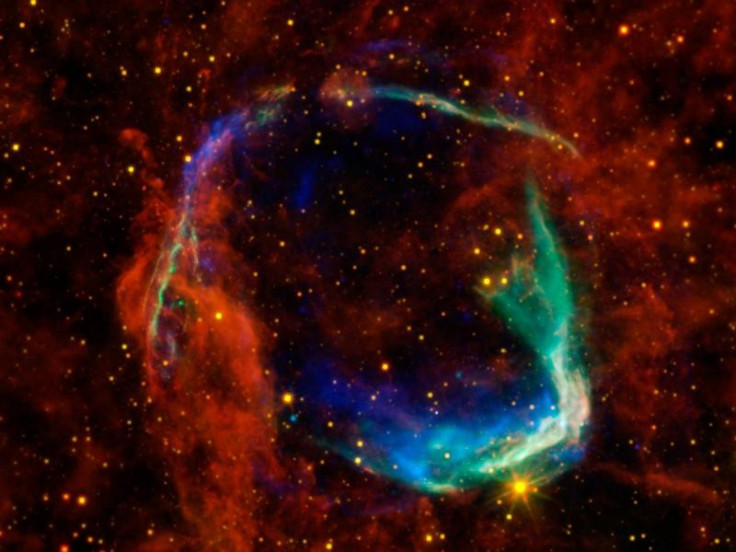NASA Scientists Solve 2,000 Year Old Super-Sized Supernova Mystery

A 2,000 year old mystery that has puzzled astronomers and researchers has finally been solved, with the help of infrared observations from NASA's Spitzer Space Telescope and Wide-field Infrared Survey Explorer (WISE). The new observations have revealed how the first-ever recorded supernova occurred and how its shattered remains ultimately spread out to great distances. The findings show that the stellar explosion took place in a hollowed-out cavity, allowing material expelled by the star to travel much faster and farther than it would have otherwise.
This supernova remnant got really big, really fast, stated Brian J. Williams, an astronomer at the North Carolina State University in Raleigh, It's two to three times bigger than we would expect for a supernova that was witnessed exploding nearly 2,000 years ago. Now, we've been able to finally pinpoint the cause.
In 185 A.D., Chinese astronomers noted a guest star that mysteriously appeared in the sky and stayed for about 8 months. By the 1960s, scientists had determined that the mysterious object was the first documented supernova. Later, they pinpointed the object, by now called RCW 86, as a supernova remnant located about 8,000 light years away. However, there was something that still bothered researchers.
The star's spherical remains were larger than expected. If they could be seen in the sky today in infrared light, they'd take up more space than our full moon.
The solution arrived through new infrared observations made with Spitzer and WISE and previous data from NASA's Chandra X-ray Observatory and the European Space Agency's XMM-Newton Observatory.
The findings reveal that the event is a Type 1a supernova, created by the relatively peaceful death of a star like our sun, which then shrank into a dense star called a white dwarf. The white dwarf is thought to have later blown up in a supernova after siphoning matter, or fuel, from a nearby star.
A white dwarf is like a smoking cinder from a burnt-out fire, Williams explained, If you pour gasoline on it, it will explode.
Scientists initially suspected that RCW 86 was the result of a core-collapse supernova, the most powerful type of stellar blast. They saw hints of a cavity around the remnant. At that time, such cavities were only associated with core-collapse supernovae. In those events, massive stars blow material away from them before they blow up, carving out holes around them. However, other evidence argued against such a theory.
X-ray data from Chandra and XMM-Newton indicated that the object had high amounts of iron, a telltale sign of a Type 1a blast and, together with the infrared observations, a picture of a Type 1a explosion into a cavity emerged.
Modern astronomers unveiled one secret of a two-millennia-old cosmic mystery only to reveal another, stated Bill Danchi, Spitzer and WISE program scientist at NASA Headquarters in Washington, Now, with multiple observatories extending our senses in space, we can fully appreciate the remarkable physics behind this star's death throes, yet still be as in awe of the cosmos as the ancient astronomers.
© Copyright IBTimes 2024. All rights reserved.





















